
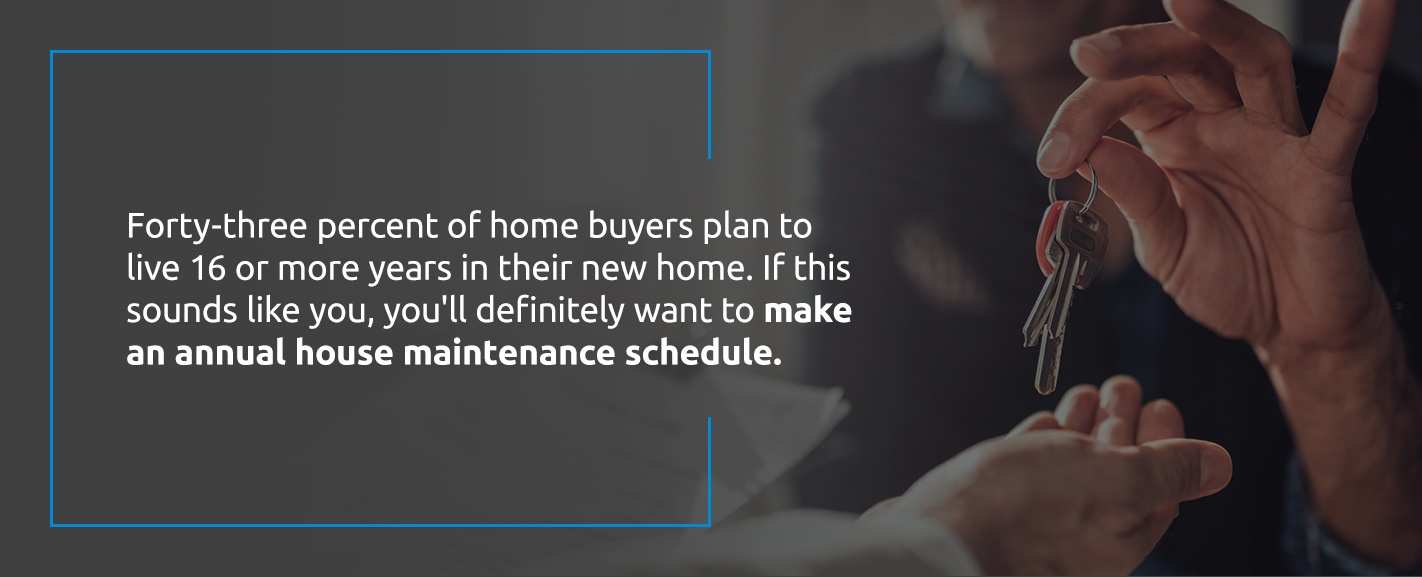
According to the National Association of REALTORS®, 43% of home buyers plan to live 16 or more years in their new home. If this sounds like you, you’ll definitely want to make an annual house maintenance schedule.
Every year, you’ll want to perform a thorough inspection of some of your home’s most important features, like the roof and HVAC system. Although you may not need to have the plumbing or electrical systems inspected by a professional every year, you’ll want to consider annual checkups if you’ve had issues with pipes or wires or live in an older home. These annual inspections will help keep your home comfortable and safe and save you from catastrophic repairs. Besides inspecting your home, there are a few deep-cleaning tasks you should take care of yearly.
In this chapter, we’ll share a yearly maintenance checklist that you can add to or take away from depending on your needs. We’ll also discuss common long-term homeowner concerns like roof maintenance and termite inspections.
Have questions about homeowners insurance? Don’t leave them unanswered — reach out to us at David Pope Insurance.
To keep your home in tip-top shape, use this checklist at least once a year:
Your roof protects you, your family and your belongings from wind, rain, snow, heat and other weather-related hazards. Since your roof is one of the most important parts of your home, you should have a professional inspect it twice a year — ideally at the end of winter and after summer, and especially after a severe weather event. Regular inspections and preventive maintenance can help you extend the life of your roof and enjoy peace of mind. Considering that it can cost several thousand dollars to replace a roof, it’s probably worth it to pay for a professional inspection and make minor repairs immediately.
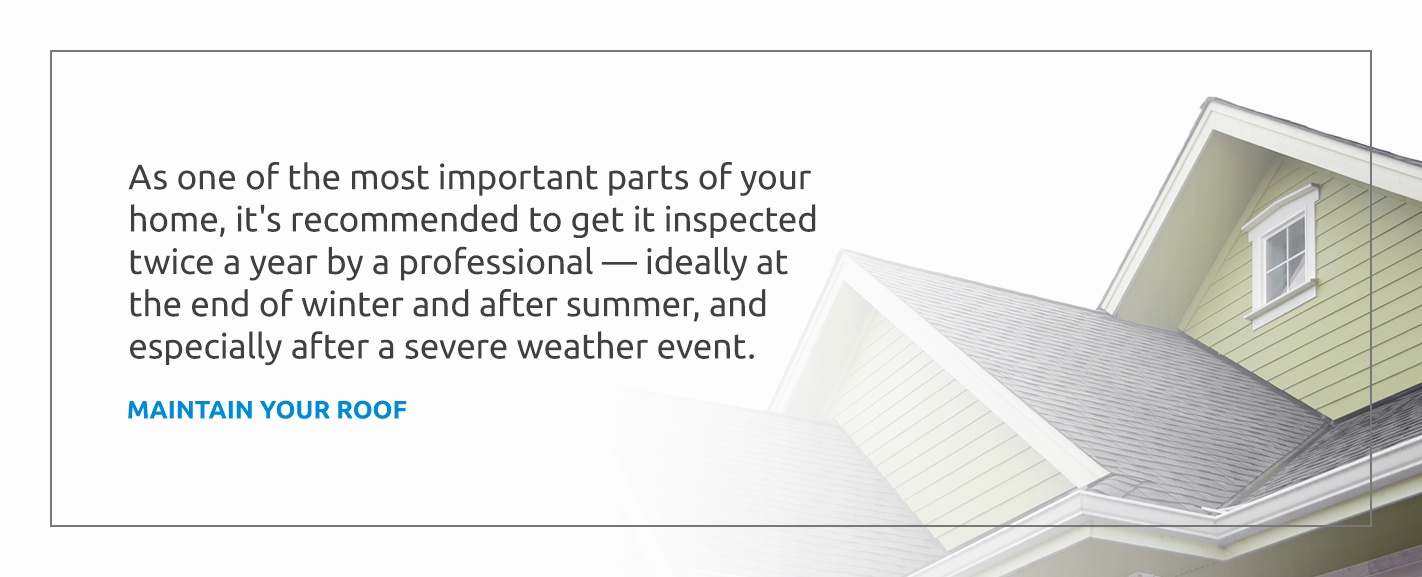
Between inspections and professional attention, you can take steps to keep your roof in great shape. Maintenance depends on the materials used in your roof, but here are general tips to guide you in the right direction:
Sump pumps usually last five to seven years, though this can vary. Sump pump maintenance is easy and involves inspecting the cord to the pump for wear and tear, making sure the pump is upright and cleaning the pump’s screen a few times a year.
Be sure to check the sump pump at least once a year. You can test the sump pump easily by lifting the float and seeing if the pump turns on. You can also pour a bucket of water into the sump pit to make sure the pump automatically turns on and removes the water. Even if the pump seems to function correctly, it’s a good idea to replace it or have a new one ready to go if the pump is over seven years old. Your sump pump protects your basement from flooding by pumping water away from your home, so it’s important it works.
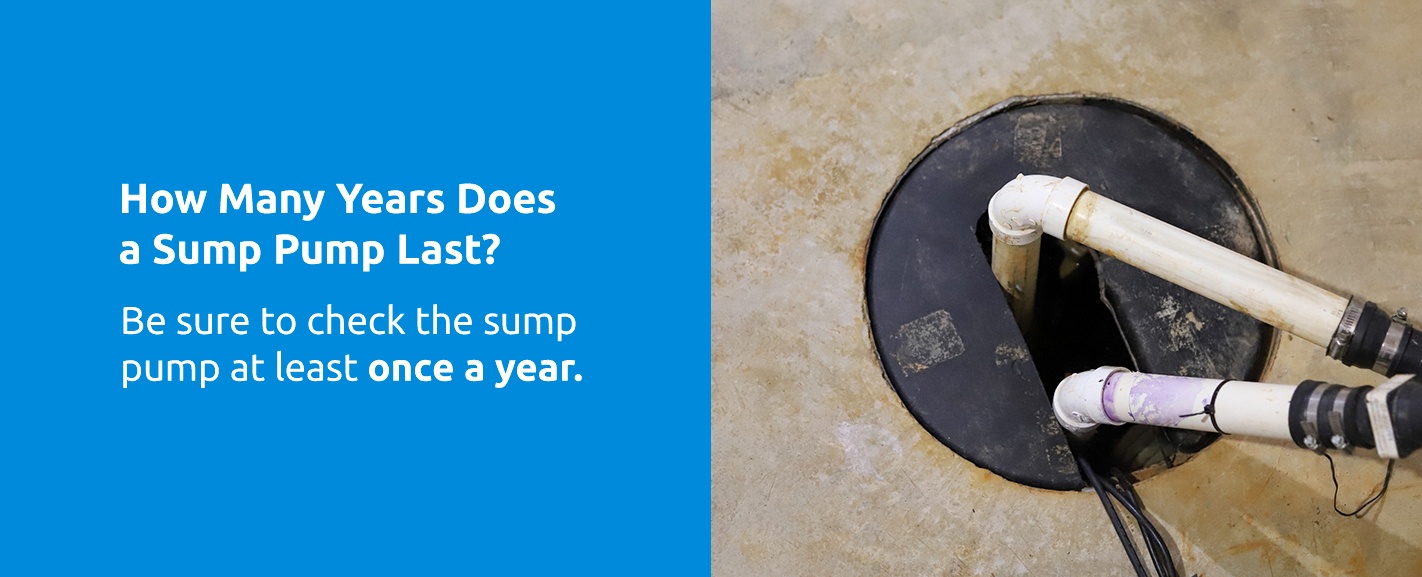
You are not required by law to get your home inspected for termites every year, but it’s still recommended. It’s especially important to have a yearly termite inspection if you have found signs of the pests in or near your home. According to Mississippi State University, signs of a termite infestation include:
If you discover signs of an infestation, contact a professional right away.
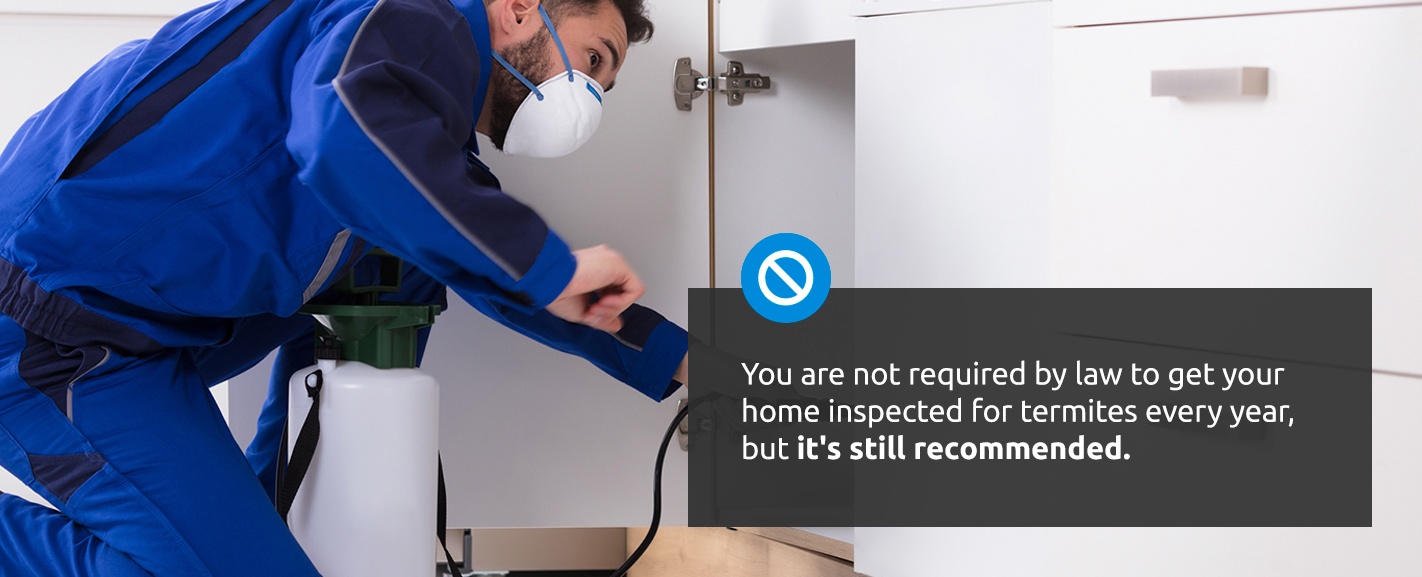
According to Homeadvisor, an annual termite inspection costs $50 to nearly $300, depending on the size of your home.
If you plan to stay in your home for several years or longer, you’ll eventually need to replace some major items. The International Association of Certified Home Inspectors (InterNACHI) put together a list of average life expectancies of materials, systems and appliances found throughout the home to give you an idea of what to expect. For example, according to InterNACHI, you can expect a furnace to last 15 to 25 years with regular maintenance and normal wear and tear. If your home is older or has been exposed to extreme weather conditions or neglect, you can expect to replace certain items sooner.
You’ll want to try to set aside money each year to prepare for future replacements. Keep this money in an emergency fund or a special savings account separate from your monthly maintenance budget. Start by creating a list of major items in your home that will need to be replaced and when they are likely to stop working. Include an estimate of how much it will cost to replace the items. For example, if you’ll need a new furnace in 15 years, you’ll need to save around $3,000 for the furnace and $1,000 for installation costs. That means you need to have at least $4,000 saved in 15 years. If you break it down, you should try to set aside around $23 a month for this future need.
However, if you cannot afford to save for future replacement items, you have other options. You might be eligible for a home equity loan or government loan program when you need to replace something. You can also consider paying for the repair with a credit card. If you need to make a major repair due to a storm or other weather event, check your homeowners insurance policy and see what’s covered. Make sure you consider any warranties you might have with an appliance or system as well. No matter your situation, you have options to keep your house safe and functional.
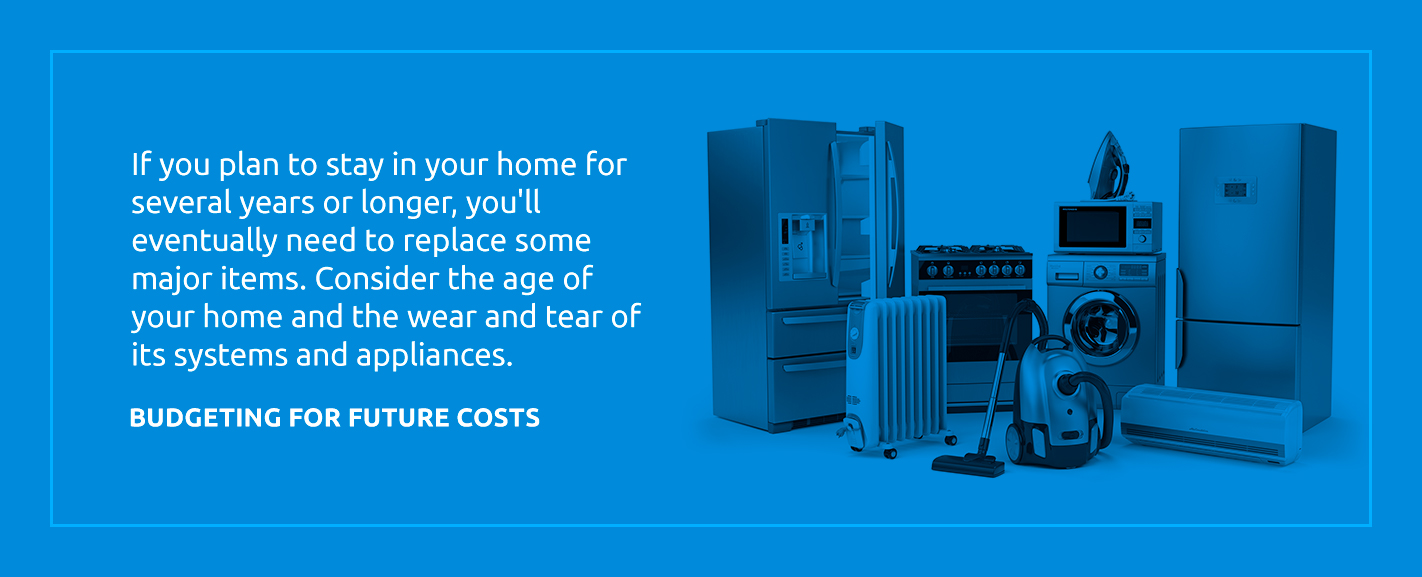
Whether or not you’re a first-time homeowner, your home may be your most valuable asset. Your home’s maintenance plan will help protect your property and precious belongings, including you and your family.
However, even a preventive home maintenance plan can’t stop Mother Nature from doing her job. You need a plan to protect your home and your wallet when disaster strikes. This is where homeowners insurance comes into play.
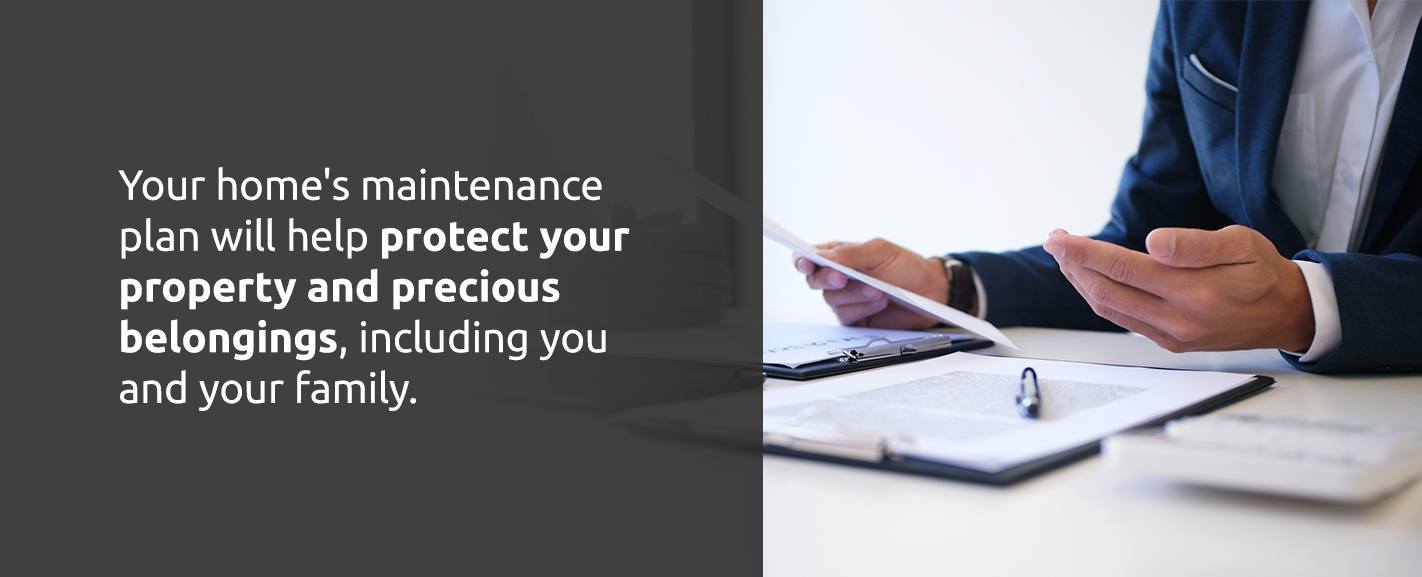
In general, mortgage lenders require homeowners insurance, but even if you paid for your house in full, it’s still important to have coverage. Homeowners insurance will pay for repairs if your home is damaged by fire, wind, hail or another disaster. It will also cover belongings such as furniture or clothes that might become destroyed in a fire or natural disaster. Homeowners insurance generally does not cover damage caused by flooding or earthquakes, but this also depends on the policy. An insurance professional can explain different policies and help you make the right choice for your home and budget.
At David Pope Insurance, we understand homeowners have unique needs. We also know homeowners insurance can seem complicated, especially since you have a lot of plans to choose from. We are here to explain your options and help you select an affordable insurance plan that gives you the coverage you need. If you’re ready to protect your home and enjoy peace of mind, contact one of our locations or request a quote.
